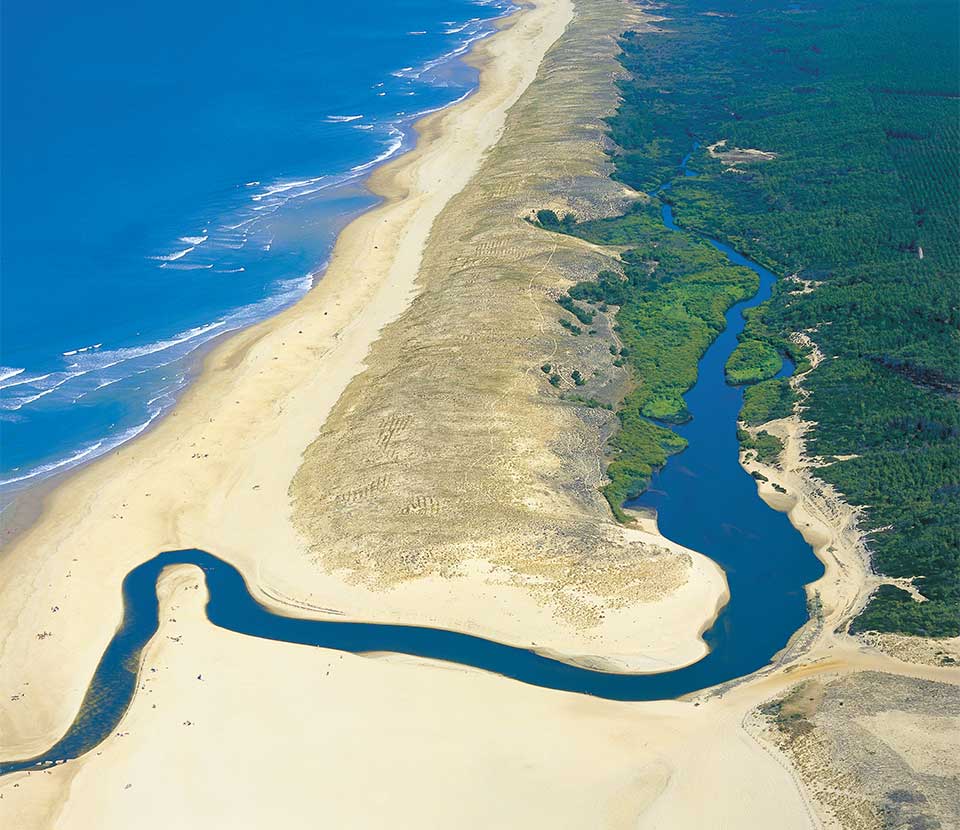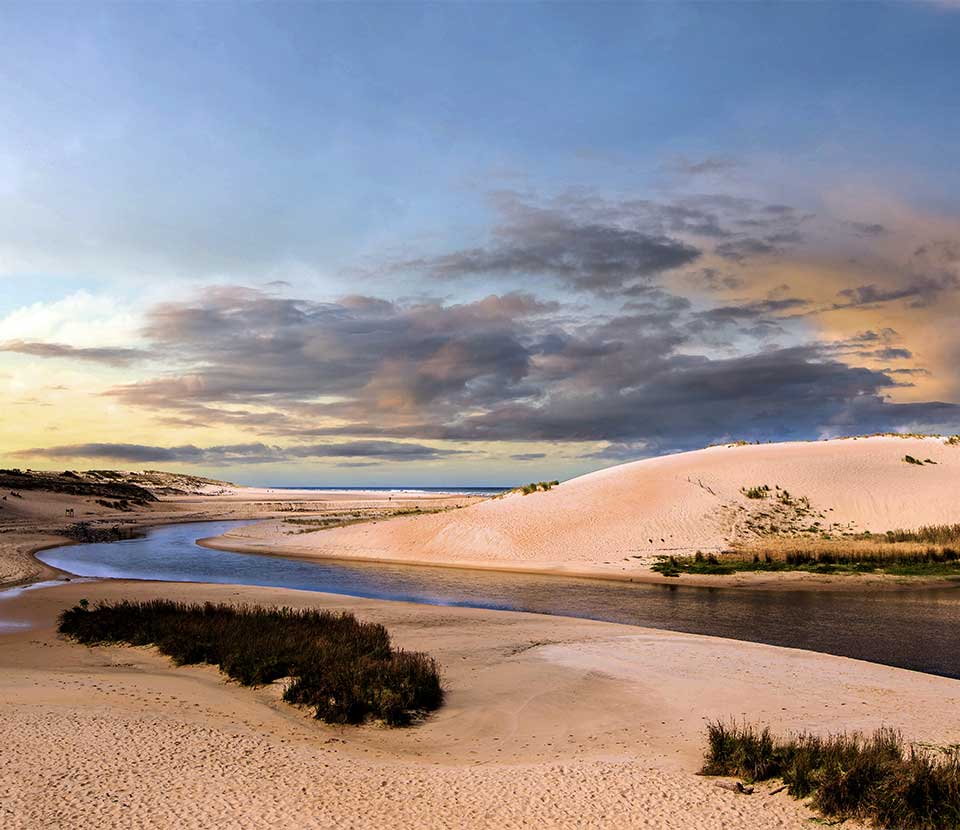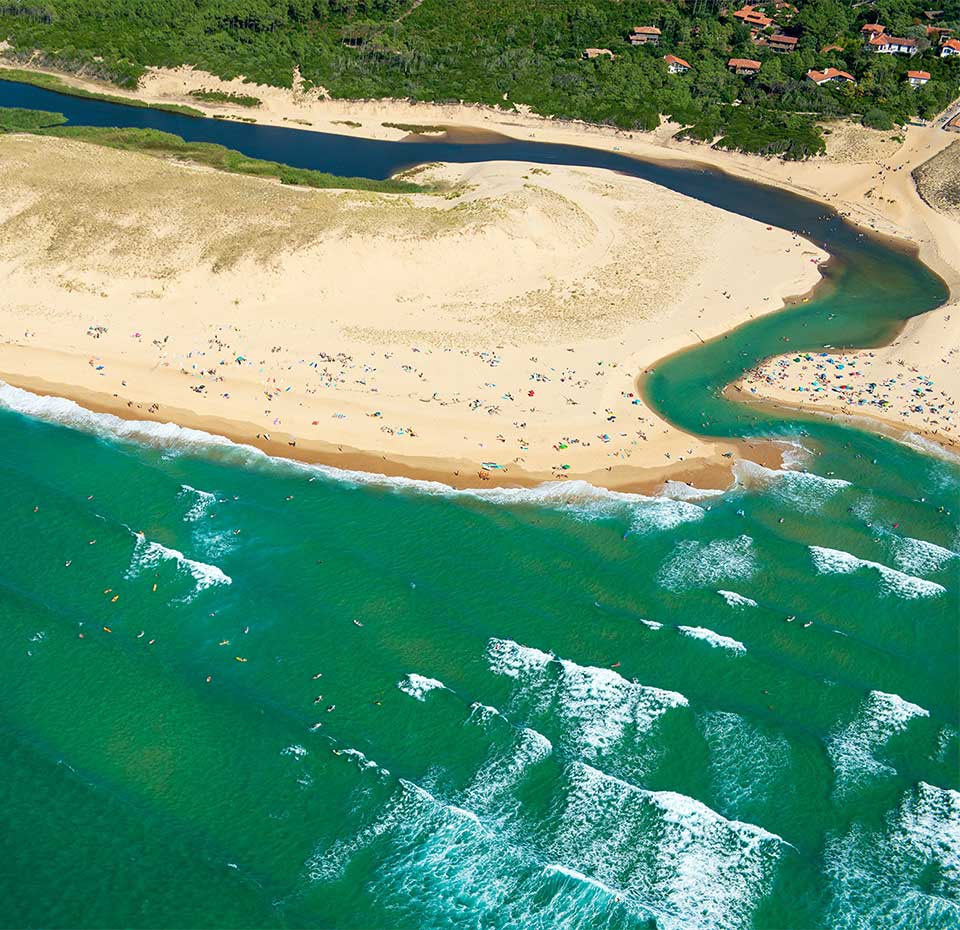The courants d'Huchet nature reserve
A natural treasure in the Nouvelle-Aquitaine region, the Courant d’Huchet is unique in several respects. The only watercourse in the Bay of Biscay linking the Etang de Léon to the Atlantic Ocean, it is now a National Nature Reserve of exceptional biodiversity.

Courant d’Huchet nature reserve: a site rich in history
The history of the Nature Reserve begins with that of the Courant d’Huchet, discovered in 1908 by Gabriele D’annunzio, an Italian poet on holiday in the region. In 1934, he classified the river and its banks as a natural monument and a site of artistic, historic, scientific, legendary or picturesque interest. Over the years, other areas in the vicinity were also recognized and protected:
- 1968, classification of the Léon lake, born of the development of the dune belt.
- 1977, designation of the Cout de Moutagne marsh as a wildlife reserve.
- 1980, classification of the banks of the Etang de Léon.
The ultimate consecration came in 1981 with the classification of a 618-hectare area as the Courant d’Huchet National Nature Reserve. This paradise for local flora and fauna in the Landes de Gascogne region stretches along the Atlantic coastline in the communes of Léon, Moliets-et-Maa and Vielle-Saint-Girons.
An immense wealth of biodiversity
Each of the park’s ecological units is home to a precious and varied natural heritage characteristic of the wetland in question. The richness of the Reserve is linked to the uniqueness of each environment, which also evolves in perfect symbiosis with the surrounding areas. The dune on the coast, the peat bogs and marshes near the lake shore, the river banks with their luxuriant vegetation… Each area is home to a rich ecosystem in every season. The Réserve Naturelle du courant d’Huchet, on a passageway for migratory birds, is even recognized on a European scale as a site for the protection of endangered species (mink, otters, etc.). Spectacularly flowering marsh hibiscus, water clover, Osyris or Rouvet… Its great diversity of flora also makes it a place to be admired without moderation. In some sections, the shady Courant d’Huchet even takes on an Amazonian air! If you choose the water route, you’ll have to thread your way through the willows and other trees that bend and reflect in the river.


Discovering the Reserve: practical information
The wooded area of the reserve is criss-crossed by numerous signposted hiking trails, which you can follow at your leisure to discover every nook and cranny at your own pace. The local tourist office has published a guide to help you find your way around. We recommend, for example, the loop that starts at the Pichelèbe bridge and takes you to the mouth of the Courant, via the Nasse dam, the Léon pond and Huchet plage. Bird lovers can choose the Marais de la Pipe loop (Moliets-et-Maa), which takes them to an observatory.
Prefer to be accompanied by a guide? Depending on the time of year, the Reserve teams also offer 2 to 4-hour outings on specific themes (botany, ornithology…). To discover the reserve in a different way, take time out for a boat trip on the Courant d’Huchet. Meet at the Chalet de Pichelèbe or at Léon (Maison de la Réserve). Why not set up camp nearby? The 4-star campsite in the Landes, in the heart of the pine forest, is just 65 km from the Etang de Léon. This open-air hotel, ideally located on the shores of Lac de Biscarrosse, is the perfect base for a family or group outing to the sand dunes of the Atlantic coast and beyond.
